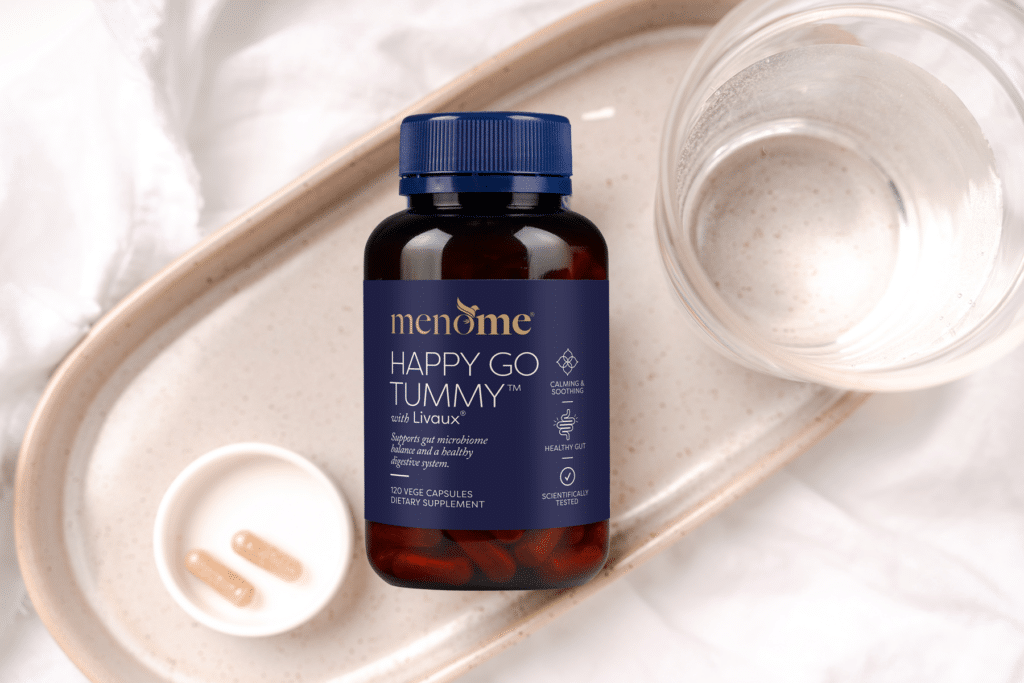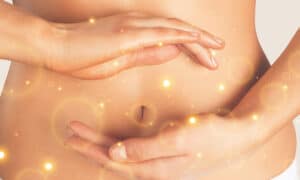Pizza, don’t you love it? I don’t know about you, but I’m totally addicted. In fact, when I was in Italy, I had it for dinner just about every night!
However, now that I’m back to ‘real life’ my body functions better when I don’t eat too many refined carbohydrates. Have you heard me mention before that our bodies don’t do well with carbohydrates during menopause? Especially the processed kind. And we’re the first generation of women to be tempted by so many of these.
So, these days I still have my pizza but make it with a cauliflower crust and it’s amazingly delicious. What’s more, it’s chock full of vitamin C, with vitamins K and B6, dietary fibre, choline, manganese, biotin, and folate. Plus its hormone and waistline friendly so what’s not to love?
This recipe is for a traditional ‘red’ pizza but another taste sensation is a ‘white’ pizza. Brush extra virgin olive oil over the crust and top with goat or feta cheese, mushrooms, Spanish onions and sage leaves.

Ingredients for pizza base
- 1 large cauliflower head
- 4 eggs or flax eggs (1 = 1 tbsp ground flaxseeds:3 tbsp water)
- 2 cups of cheese or dairy-free cheese (we used parmesan cheese)
- 3 tsp oregano
- 4 cloves garlic
- sea salt and cracked pepper to taste
Instructions
- Preheat the oven to 200 degrees Celcius (about 400 Fahrenheit).
- Prepare two pizza dishes/stones/trays.
- Chop your cauliflower into small pieces and add them to a food processor.
- Pulse until the cauliflower resembles rice.
- I steam my cauliflower for a few minutes (three to four), but you may wish to microwave yours in a covered bowl for 10 minutes.
- Remove from heat and let cool.
- Use a paper towel or your hands to squeeze excess moisture from the cauliflower.
- Add the eggs, cheese, herbs, garlic, salt, and pepper and mix together.
- Put on your dish/stone or tray and bake for 1/2 hour. You will see the base ‘brown’ up like the picture below.
- Remove from the oven and add your toppings and pop back into the oven for about 7-8 minutes (keep an eye on it according to your oven).
Tomato sauce
We made our own simple tomato sauce on the stove in a medium/small pan. We used fresh basil leaves, a can of tomatoes, tomato paste, garlic and olive oil. The secret is to cook the garlic in the olive oil first and add the tomatoes just as it begins to turn brown.
Nutrient tip: the lycopene in tomatoes is excellent for overall health during menopause.
We added mushrooms, olives, a dusting of parmesan and a few pine nuts.
On the side
Finally, we served it up with a crispy green salad including liver-loving rocket laced with a dressing of extra virgin olive oil and apple cider vinegar.
So that was our PPFF (phytoestrogens, protein, good fat and fibre) covered. And the salad dressing supports blood sugar and digestion and boosts omega-3 essential fatty acids.
Overall, this recipe fits in beautifully with the Mediterranean-style diet recommend for – well, everyone – but especially for women in midlife and menopause.
YUMMYLICIOUS!
#lovepizza
image via Pixabay
We suggest a multi-pronged approach to experiencing your best natural menopause journey. Nutrition and hydration play a huge role along and good gut health is a major player too. That’s why we created Happy Go Tummy®












